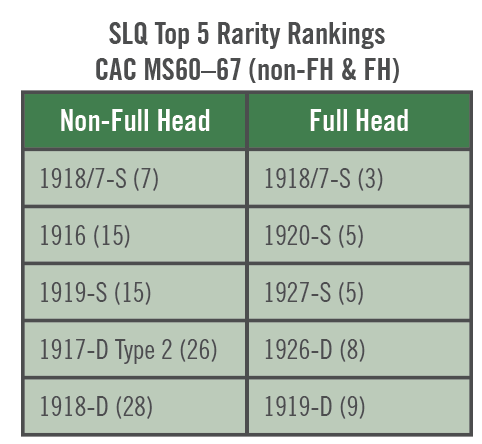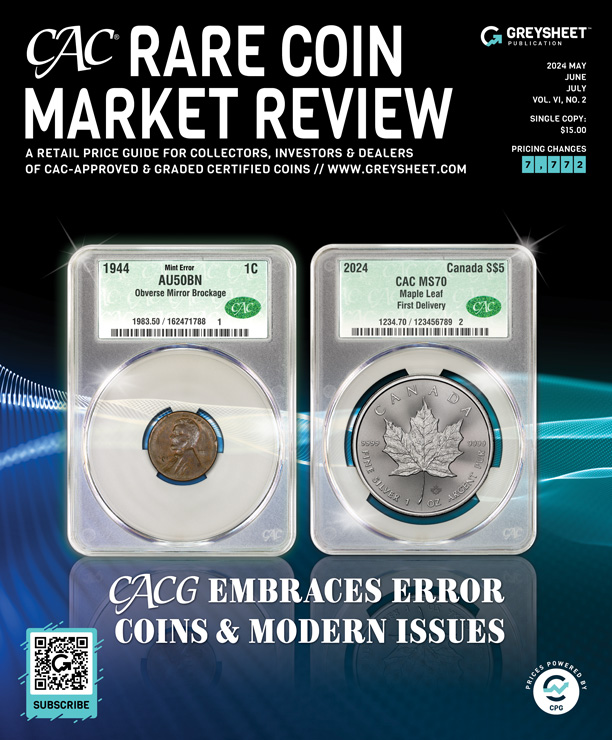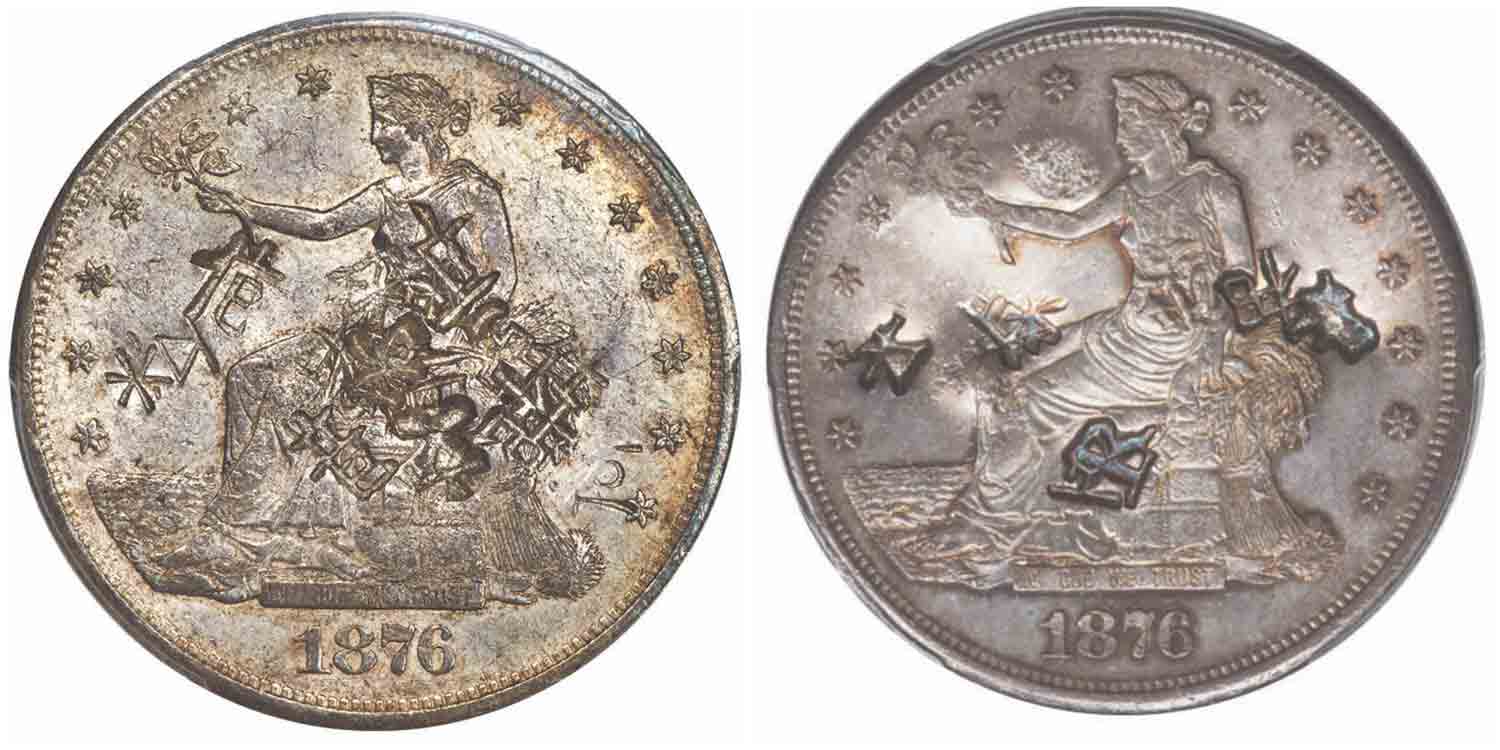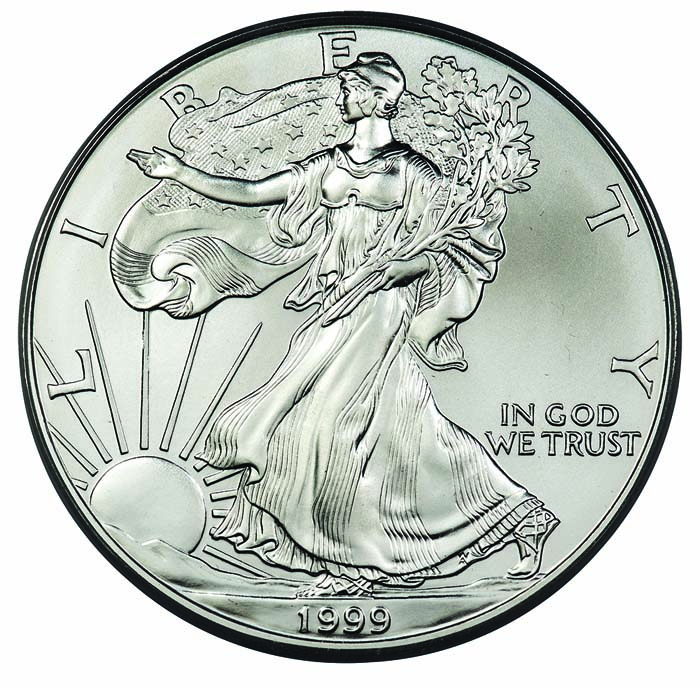STANDING LIBERTY QUARTERS: THE HISTORY, THE CONTROVERSY AND COLLECTING TODAY
There is much to take away from the above table as to the rankings of Standing Liberty Quarter issues. The most obvious and vital point to examine is how the legendary 1916 is completely missing from the Full Head ranks.
 Top 5 SLQ Rarity Rankings in CAC MS60-67 (non-FH & FH)
Top 5 SLQ Rarity Rankings in CAC MS60-67 (non-FH & FH)The Standing Liberty Quarter (SLQ) is a key series to the numismatic market; yet, it almost never came to be. The history of this series began with Robert W. Woolley, who was the Director of the United States Mint from 1915 to 1916. Woolley was eager to get underway with the new design of the American Quarter because he believed the Barber Quarter, which preceded the SLQ’s, was reaching its “legal” end. You see, a law existed with regard to the Barber Quarter, requiring the series to be minted for a minimum of 25 years. It is assumed that Woolley interpreted the 25 years as a cap on how long the series could run, which is obviously incorrect. This error, however, served as a blessing in disguise as it resulted in the birth of new series, with a gorgeous design and plenty of historic and controversial issues that remain significant to coin collecting to this day. With Mint Director Woolley calling for an end to the Barber coinage and the creation of the Standing Liberty Quarter, it was time to design and create the new coinage. As was customary at this time in our nation’s history, a competition amongst renowned sculptors was held, at the direction of Woolley, to render the most awe inspiring design for the new series. The winner of this particular competition was American sculptor, Hermon MacNeil of Massachusetts. His winning design was remarkably close to the finalized obverse we know today, with the most symbolic component being the shield in Liberty’s left hand. The meaning behind this shield was so significant at the time because World War I was taking place in Europe. The shield represented America’s preparedness and eagerness to defend itself, its allies and its deep rooted faith in Democracy. However, widespread attention was not focused on the shield’s symbolism nor on the olive branches’ depiction of peace. Instead, the focal point was rooted in controversy and was centered around Lady Liberty’s completely exposed right breast.
In the early 20th century, such a design was perceived as downright scandalous and was met with large scale disapproval. The release coincided with the ongoing women’s suffrage movement. Women were seeking the right to vote as well as for their voices to be heard. So, as you can imagine, the image of a bare breasted Lady Liberty did not set well with women. MacNeil, and many others involved with the design, were criticized for such a filthy, risqué design choice. The uproar reached such magnitudes that even religious leaders spoke out against it; making it arguably the greatest controversy in the history of U.S. coinage. The question still remains as to why MacNeil chose such a provocative design knowing full well that it would foster negative publicity. One can only speculate as to his reasoning as well as the origin of his design inspiration; and whether Lady Liberty’s exposed breast was truly symbolic in nature or purely aesthetic. An interesting fact about the depiction is that a live model was used during the design of the obverse. “The Girl on the Quarter,” as she became known, was Doris Doscher. Following her days as a model, Doris became a silent film star. Doris died in 1970. Two years after her death, a woman by the name of Irene MacDowell claimed that she was the model for the Standing Liberty Quarter. She went on to say that she took this job, modeling partially unclothed, against her husband’s will. However, in 1982, Doris Doscher’s husband came forward and publicly insisted that Doris served as the model for Lady Liberty. Regardless which story is true, MacNeil’s depiction of Lady Liberty is undeniably a breathtaking work of art not an obscene image. In my opinion, his design should be admired and appreciated for its artistic beauty in the same manner as a Gustav Klimt or a Renoir.
Despite the infamous exposed breast, this series was ready for release in July of 1916; but, for some reason, did not enter circulation until December of that year. So, 1916 coins were produced for a very brief period resulting in miniscule mintage numbers as compared to the rest of the series. Thus was created the beloved key date 1916 Standing Liberty Quarter known popularly throughout the numismatic community today. In the early portion of 1917 the government had heard enough about this exposed breast and called for a redesigned Standing Liberty Quarter to be created in its place. As MacNeil and many others involved in the creation of the first design did not agree with this, they sarcastically covered up their so called “blasphemous” error by humorously slapping a suit of armor onto Liberty’s chest rather than merely extending her drapery. This change would remain in place, along with some stars added to the reverse, for the remainder of the series. The only other design change made was the Type 3 which addressed the excessive wear of the coin’s date, redesigning it as a recessed date. Overall, this series is notorious for having a weak strike making the recessed date necessary. This perpetual weakness would go on to be the rationale behind why we have the Full Head designation today in our grading system. The head and crown of Miss Liberty is so detailed that it would either wear away very easily or not even be fully struck at the Mint. Therefore, Full Head versions of SLQ’s can be worth large premiums over their weakly struck counterparts on the market today.
As we move on from understanding the history of this coinage, let us now place the spotlight on the modern collecting of this great, yet short, series. The Standing Liberty Quarter Series is very collector friendly as it can attract the attention of collectors with barely $100 to spend as well as those with over $100,000 to spend and virtually any dollar amount in between. Not to mention the fact that the shortness of the series makes it attractive to collect; since building a complete set or even just a date set is not a daunting task or too expensive to do. Even with the brevity of the series (1916-1930), there are still plenty of keys and semi-keys to the set including the famous 1916 issue mentioned earlier. Other key issues include the 1918/7-S and the 1927-S with numerous semi-keys adding to the underrated rarity that these coins have to offer. The design of the Standing Liberty Quarter, with its controversial history, is up there with some of the most beautiful in all of numismatics. This is not just my opinion but also popular opinion in the industry. These SLQ’s come any way you can envision them; blast white and superbly lustrous or coated in anything from light pastel coloring to deep vibrant toning. Collecting Full Head SLQ’s can be a real numismatic “rush”, bringing added beauty to your collection but at a greater cost, as some dates can be extreme Full Head rarities. These are just a few potential collecting methods. The vantage points from which you can view and collect this series are endless.
There is much to take away from the above table as to the rankings of Standing Liberty Quarter issues. The most obvious and vital point to examine is how the legendary 1916 is completely missing from the Full Head ranks. This is the greatest way of explaining Full Head rarity. Having that designation can be so unique and rare depending on the date where values skyrocket even past the king, the 1916. It is almost like having two series in one between the non-Full Heads and Full Heads. Another take away from these rankings is how rare and important the one overdate from this series truly is. The 1918/7-S tops the list of rarity both with and without a Full Head, making it one of the greatest varieties of the 20th century. The information in the above table serves another key purpose in that it makes collectors think about other dates that may otherwise be overlooked, yet are truly desirable.

Download the Greysheet app for access to pricing, news, events and your subscriptions.
Subscribe Now.

Subscribe to CAC Rare Coin Market Review for the industry's most respected pricing and to read more articles just like this.
Author: Chris Maisano











